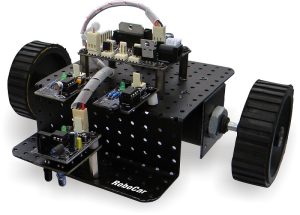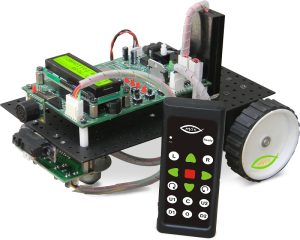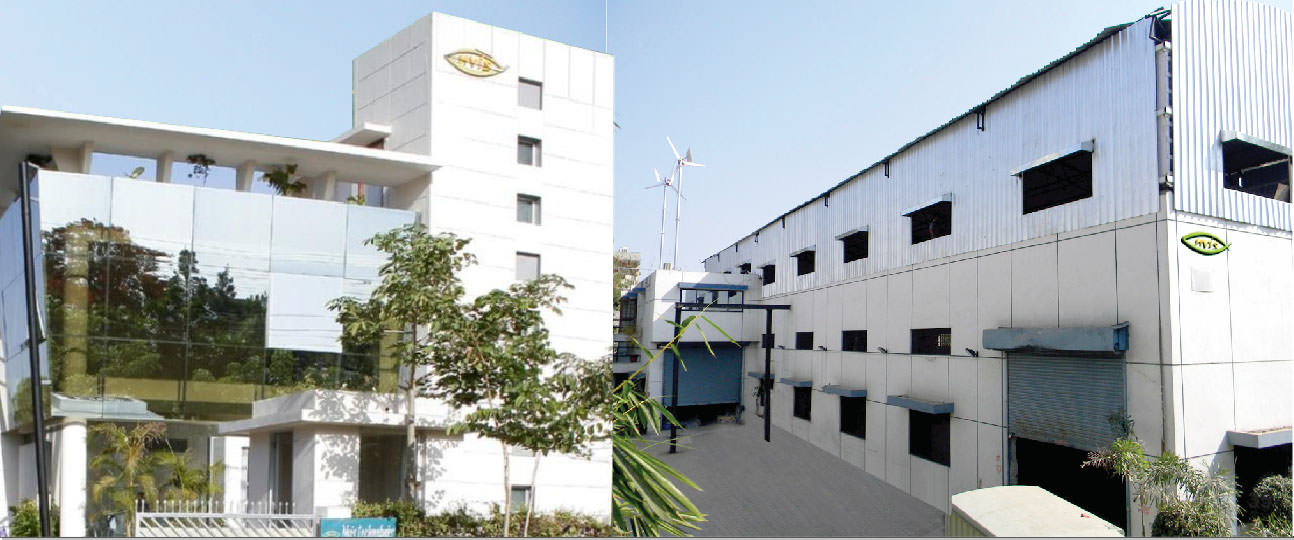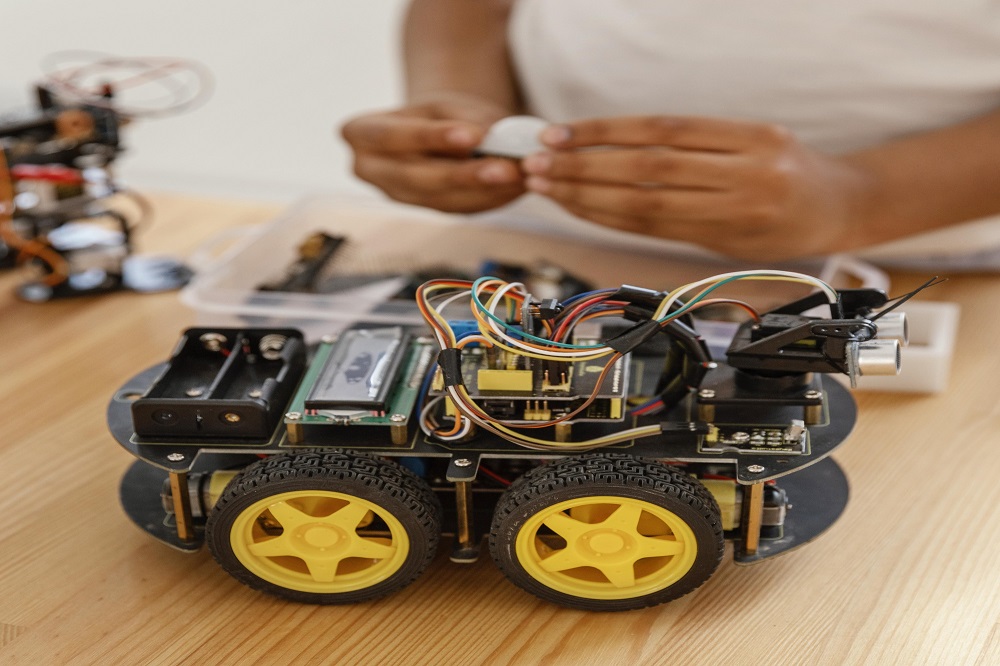Posted on December 14, 2024
Robotics is no longer just a buzzword; its disruptive potential is reshaping technology, innovation, and education. Robotics in School Education plays a pivotal role in igniting curiosity and equipping young learners with essential skills in electronics, programming, and problem-solving. With practical tools like the RoboCars, schools can bridge the gap between theoretical knowledge and real-world applications. The Nvis RoboCar Series stands out as an exceptional platform for fostering hands-on robotics learning. Before exploring the unique features of this series, let’s understand the importance of robotics in early education and its role in preparing students for a successful future in engineering and technology.
Why Robotics matters in school education
Robotics offers a multidisciplinary learning experience, blending electronics, mechanics, and programming. It helps students develop critical thinking, teamwork, and creative problem-solving skills. By working with robotics platforms, learners explore how machines sense, process, and act upon their environment—preparing them for careers in engineering, technology, and beyond.

The power of hands-on learning with Nvis RoboCar Series
The Nvis 3302W Basic RoboCar and Nvis 3302P RoboCar serve as ideal platforms for introducing students to robotics. These tools are designed to cater to varying levels of expertise, allowing students to progressively enhance their skills. Here’s a closer look at what each platform offers:
Unveiling the Nvis RoboCar series
Nvis 3302W: Basic RoboCar
The Nvis 3302W Basic RoboCar is designed for simplicity and innovation, offering a microcontroller-independent platform tailored for electronics students. With its metallic chassis, sensor modules, motor drivers, and onboard rechargeable battery, this RoboCar enables students to explore a variety of applications. Whether it’s fire sensing, obstacle avoidance, or path detection, the Nvis 3302W provides endless possibilities for experiential learning.
- Interfaces for IR, TSOP-IR, Fire, Clap, and Light Sensor modules.
- DC motor interface for motion control.
- Onboard battery charger and expansion connectors for additional functionality.
- Implementing basic to advanced robotic functionalities.
- Driving DC motors using H-bridge motor drivers.
- Interfacing various sensors for environmental sensing and response.
The Nvis 3302W is perfect for foundational robotics education, allowing students to grasp core concepts and experiment with real-world applications.

Nvis 3302P: Advanced RoboCar
For those diving deeper into robotics and embedded systems, the Nvis 3302P RoboCar offers an advanced learning experience. Powered by the PIC16F877A microcontroller, this RoboCar combines environmental sensing, data processing, and programmable actions in a compact, battery-powered design. It supports wireless operation, obstacle detection, and line-following capabilities, making it a versatile educational tool.
- Interfaces for Ultrasonic, IR Transmitter/Receiver, and Analog Sensors.
- 16×2 character LCD interface for action display.
- Optional RF module for wireless communication.
- PC-based programming for custom functionality.
- Interfacing LCDs and sensors with PIC microcontrollers.
- Controlling DC motors for multitasking operations.
- Understanding RF communication for advanced robotic projects.
The Nvis 3302P is ideal for students aiming to master robotics concepts and gain expertise in embedded systems and microcontroller-based programming.
Skills students can learn with Nvis RoboCars
Using the Nvis 3302W Basic RoboCar and Nvis 3302P RoboCar, students gain exposure to a wide range of essential skills, including:
- Technical Skills: Assembly of robotic systems, sensor interfacing, and motor control.
- Programming Skills: Microcontroller coding and automation sequence design.
- Analytical Skills: Data interpretation from sensors and troubleshooting.
- Teamwork & Project Management: Collaborating on robotic projects and managing tasks effectively.
- Creative Problem-Solving: Designing innovative solutions for real-world challenges.
These practical tools transform theoretical knowledge into actionable skills, preparing students for advanced studies and careers in technology.
Applications and benefits for schools
These RoboCars provide a platform to teach concepts like automation, embedded systems, and sensor technology in an engaging manner. Key benefits for schools include:
- Encouraging Innovation: Students learn to design and execute projects, fostering innovation and creativity.
- Building Technical Skills: Hands-on experience with sensors, motor drivers, and microcontrollers strengthens their technical acumen.
- Multidisciplinary Integration: Robotics bridges various subjects, including physics, mathematics, and computer science.
Inspiring the future through Robotics education
With tools like the Nvis 3302W and Nvis 3302P RoboCars, schools can create an environment that nurtures curiosity and cultivates practical skills. These platforms make robotics accessible and exciting, encouraging students to explore the endless possibilities of technology.
Robotics is more than just a subject—it’s an investment in the future. Empower your students today and watch them become the innovators of tomorrow.
Robotics in School Education transforms learning by integrating hands-on tools like Nvis RoboCars. These platforms bridge theory and practice, empowering students with technical, programming, and problem-solving skills. By exploring real-world applications such as automation and sensor-based technologies, students develop creativity, analytical thinking, and innovation. Practical robotics training not only enhances STEM education but also prepares young learners for advanced studies and future careers in the technology-driven world.









Leave a reply